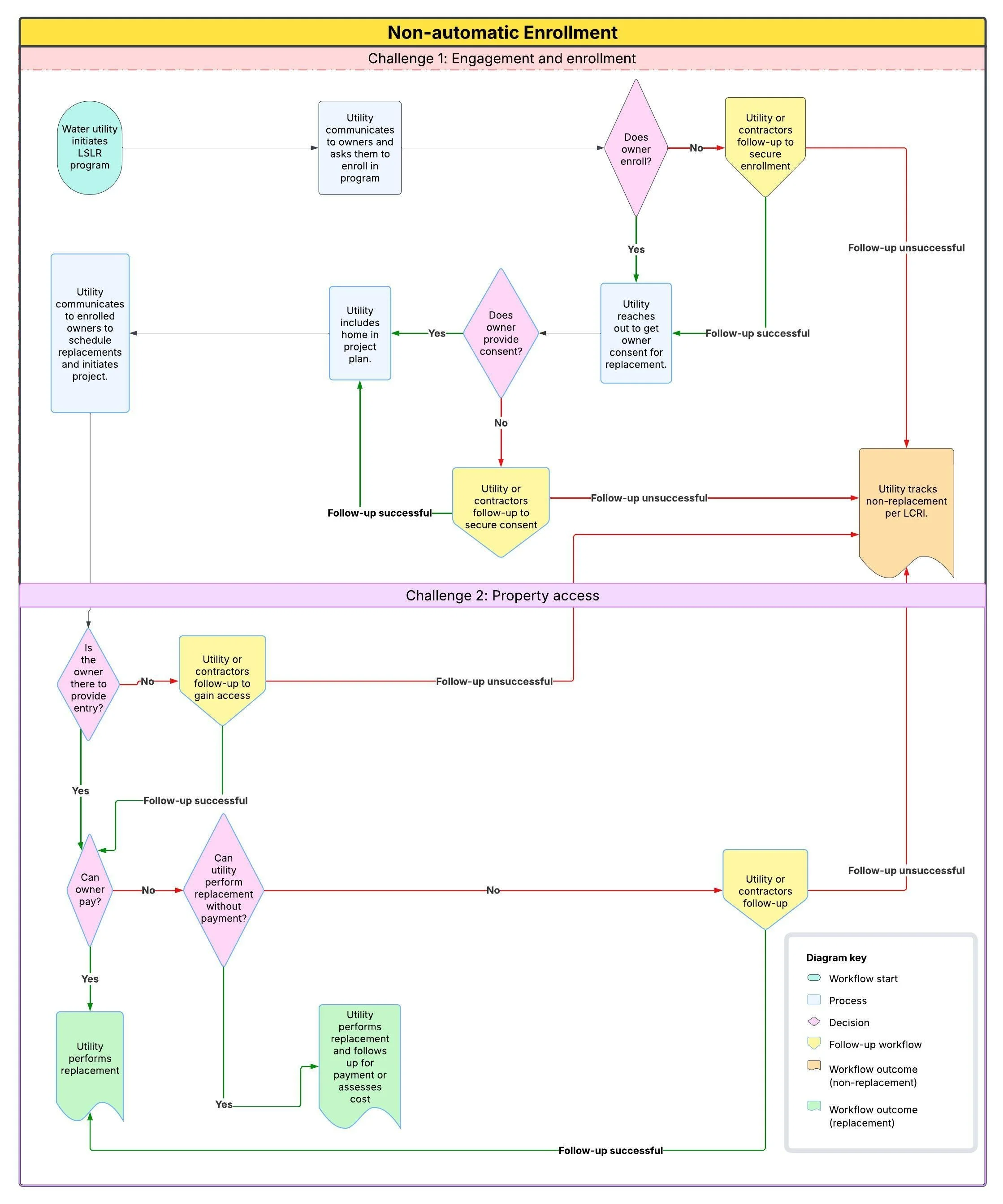
Utilizing EPIC Resources to Strengthen Texas SRF Analysis

Fixing Bottlenecks in Lead Pipe Funding

Forbes Announces Jessie Mahr as Global Sustainability Leader!

Automatic Enrollment Policies Can Make Lead Service Line Replacement Projects More Efficient

Automatic Enrollment Policies Make Lead Service Line Replacement Projects More Efficient by Addressing Common Workflow Challenges

Update: Clean Water State Revolving Fund Program Reauthorization

How effective governance can streamline restoration efforts—Louisiana CPRA Case Study

No Amount of Lead is Safe: Lead Innovation Hub Roadmaps Drive Toxic Service Line Replacement Faster, Fully, and Forever

A Look At CEQ’s New CE Explorer
On June 5th, the CEQ’s Permitting Innovation Center released their first prototype experiment, the Categorical Exclusion Explorer. The Explorer is the first time a collection of cross-agency Categorical Exclusions (CEs) has been transformed into data for experimentation. This is still in the experimental stage, and we applaud the Permitting Innovation Center for releasing early-stage products and experiments. Early and iterative releases are ideal for gathering feedback and improving future releases.
We’ve discussed using existing environmental review data management and sharing as an area ripe for experimentation and innovation.
Preview: Drinking Water State Revolving Fund Funding Tracker—Already Making an Impact

California’s restoration bottleneck deepens biodiversity debt

NextGov: Trump administration debuts permitting modernization plan, even as staff cuts could jeopardize it

First Look at CEQ’s Permitting Technology Action Plan
This blog is a first look at the Council on Environmental Quality’s (CEQ) Permitting Technology Action Plan, which aims to modernize federal permitting processes. The plan includes data standards for interoperability between agencies, service delivery standards for workflow automation and digital documents, and a maturity model for agencies to gauge their progress. Key highlights include implementing data standards, improving document management, and using GitHub for open collaboration. We note the potential for multi-agency procurement and prize competitions and outline potential impacts for agencies, applicants, and vendors. We express cautious optimism due to the plan's technical depth, interoperability focus, and use of existing work but also note concerns about talent gaps and the aggressive initial 90-day implementation timeline.

Environmental Accelerators - Value-Driven Velocity

We need to simplify environmental permits to boost their impact

Disadvantaged Community (DAC) Definitions in the Great Lakes States for Drinking Water State Revolving Funds: Guidance for a Mapping Tool to Explore and Assess DAC Definitions

Test Beds - Where Rubber Meets the Road for Innovative Tech

Automatic Enrollment Policies Can Make Lead Service Line Replacement Projects More Efficient and Expedient

The Next 55 Earth Days

An Abundance of Nature
EPIC champions a bold approach to environmental restoration, aligning with the Abundance mindset by streamlining wetland restoration, leveraging technology, and using pay-for-success models. By focusing on outcomes over process, EPIC aims to make nature restoration faster, scalable, and impactful—ensuring clean air, water, and ecosystems are abundant and accessible.

